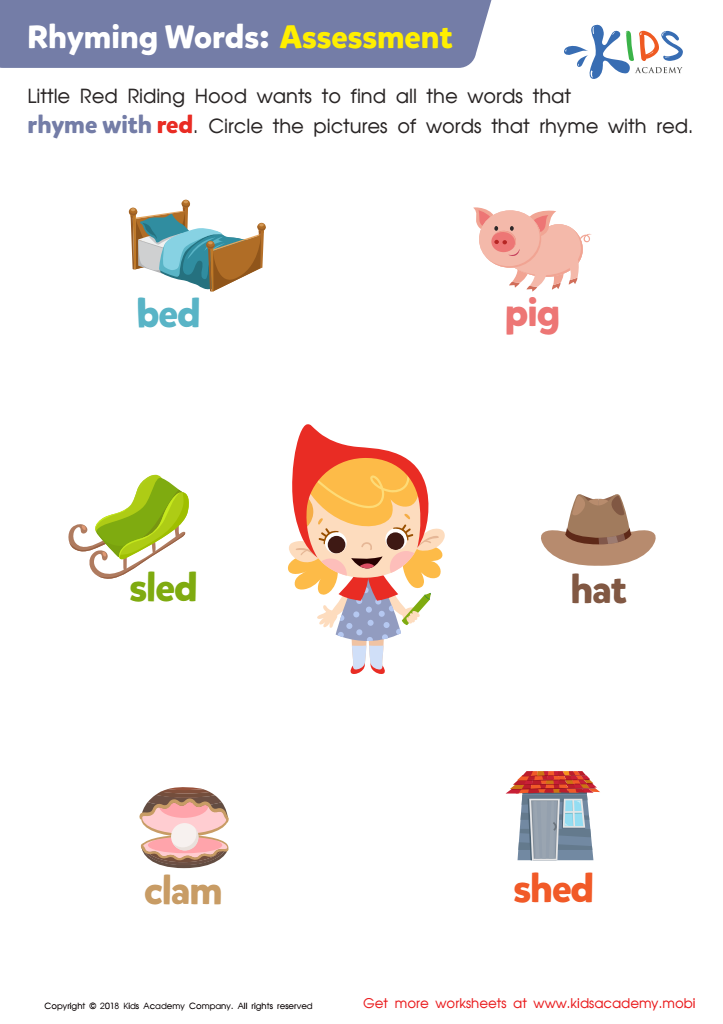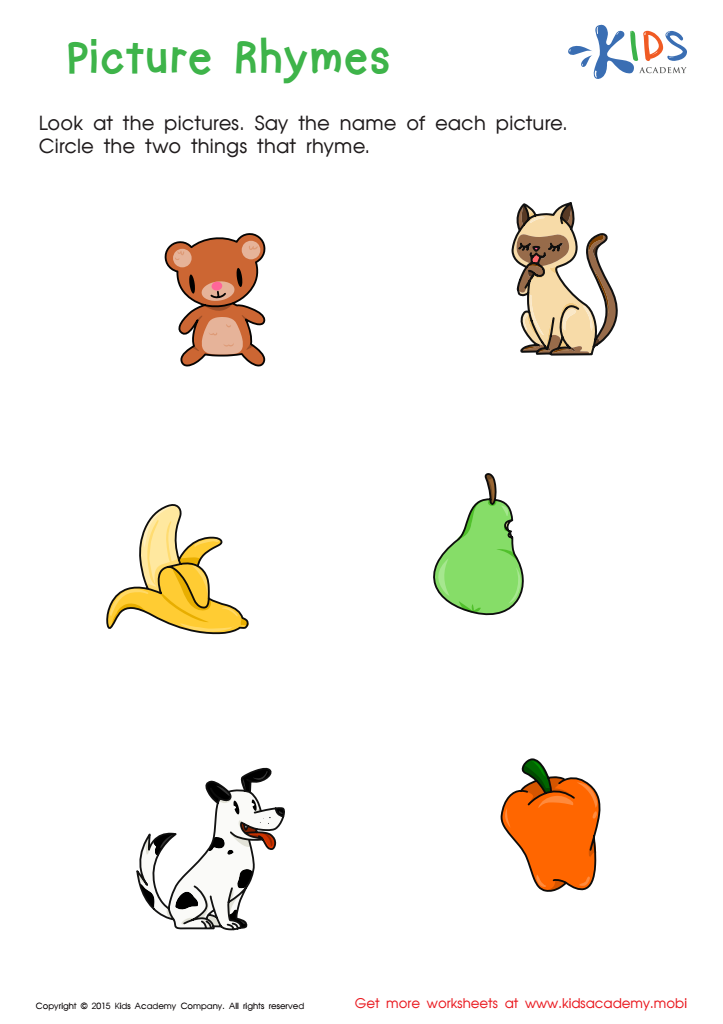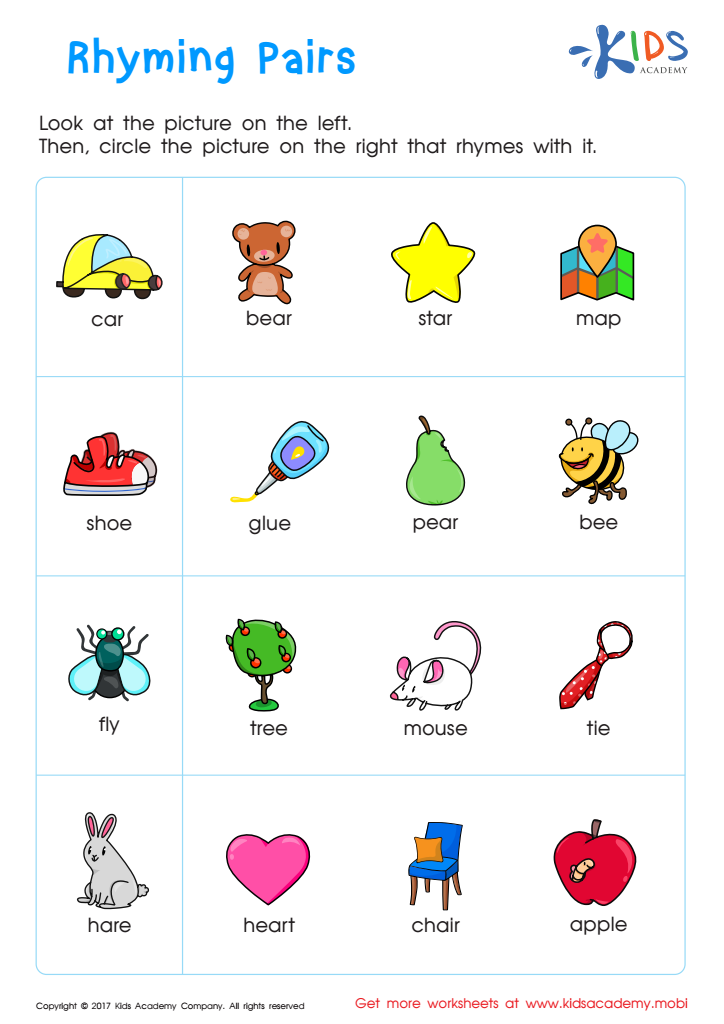Vocabulary enhancement Normal Rhyming Worksheets for Ages 4-5
4 filtered results
-
From - To
Enhance your child’s vocabulary with our engaging Normal Rhyming Worksheets, specially designed for ages 4-5! These interactive worksheets focus on teaching children the fundamentals of rhyming, which is vital for early literacy and language development. By exploring fun rhyming words and engaging activities, young learners will build their vocabulary while improving phonemic awareness. Our worksheets incorporate colorful visuals and familiar themes, making learning enjoyable and effective. Encourage creativity and language skills in your little one with exciting, educational tasks that make vocabulary enhancement a fun adventure. Boost your child's reading readiness with our delightful and effective rhyming resources today!


Rhyming Words: Assessment Worksheet


Rhyming Words Rhyming Worksheet


First Words: Picture Rhymes Worksheet
Vocabulary enhancement through normal rhyming is vital for children aged 4-5 because language development during these years lays the groundwork for future learning. Young children are naturally drawn to rhymes, making them more engaged and enthusiastic in learning new words. Rhyming promotes phonemic awareness, which is crucial for reading readiness. By playing with sounds and rhythms, children learn to recognize patterns in language, making it easier for them to decode words later on.
Additionally, rich vocabulary exposure enhances communication skills. When children use words they’ve learned through rhymes in everyday conversations, they build confidence in expressing themselves. This, in turn, encourages creativity and imaginative play, contributing to emotional and social development. Furthermore, many rhyming activities can be fun and interactive, offering opportunities for bonding between caregivers and children—fostering a loving learning environment.
Teachers and parents should care about vocabulary enhancement through normal rhyming, as it not only makes learning enjoyable but also equips children with essential language skills that will benefit them throughout their educational journey and beyond. By integrating rhyming into daily routines, caregivers contribute to a solid foundation for literacy, paving the way for academic success and effective communication in the future.

 Assign to My Students
Assign to My Students



















